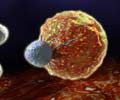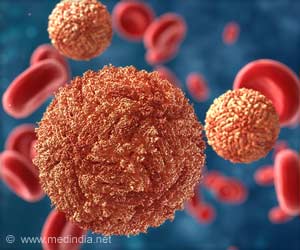New DNA technology shows promising results in boosting immune responses and survival against solid tumors like melanoma.

‘Combination of DNase I and CAR T-cells shows promise in reducing tumors and improving the survival rate in #melanoma. #cancer #tumor #medindia
’





Boosting Cancer Treatment with DNase I and CAR T-Cells
The combination therapy has shown strong potential for improving treatments for solid tumors like melanoma. The preclinical study was conducted on a mouse model with lung cancer metastasis. In this study, the team tested a single injection of DNase I (10 mg/kg) with CAR T-cells in mice that had lung cancer metastasis. The results found were:- Suppressed Tumor Growth: The combination of DNase I and CAR T-cells significantly reduced the tumor cells in the lungs compared to CAR T-cells alone.
- Increased Survival: Mice that received the combined treatment had extended survival times, showing that the therapy was more effective than CAR T-cell therapy alone.
- Improved Immune Response: DNase I works by breaking down neutrophil extracellular traps (NETs)—structures that block immune cells from reaching and attacking cancer cells. By removing it, DNase I helped increase the number of immune cells (including CAR T-cells) that infiltrated the tumor, making the immune system more effective in fighting cancer.
How DNase I Helps CAR T-Cells Target Solid Tumors
CAR T-cell therapy has shown positive results in treating cancers like leukemia and lymphoma. However, it was not effective in treating solid tumors like melanoma or pancreatic cancer. One of the key challenges in treating solid tumors is the tumor microenvironment (TME)—the area surrounding the tumor that can be hostile to immune cells. The TME often contains NETs, which prevent immune cells from attacking the tumor and allow the cancer to grow.By adding DNase I to the treatment, Xenetic was able to disrupt the NETs, making it easier for CAR T-cells to target and kill the cancer cells. This research suggests that DNase I could improve the effectiveness of CAR T-cell therapy by making the tumor environment more conducive to immune attacks.
The co-administration of DNase I with CAR T-cells resulted in significantly lower numbers of metastatic tumor foci (tumor spread points) and a substantial increase in survival compared to CAR T-cells alone.
The immune cells within the tumor from the DNase I-treated mice showed lower levels of exhaustion markers (like PD-1 and TIM-3), which suggests that the DNase I treatment helped reduce the immune suppression often caused by tumors, allowing the immune system to remain active and fight cancer more effectively.
Advertisement














